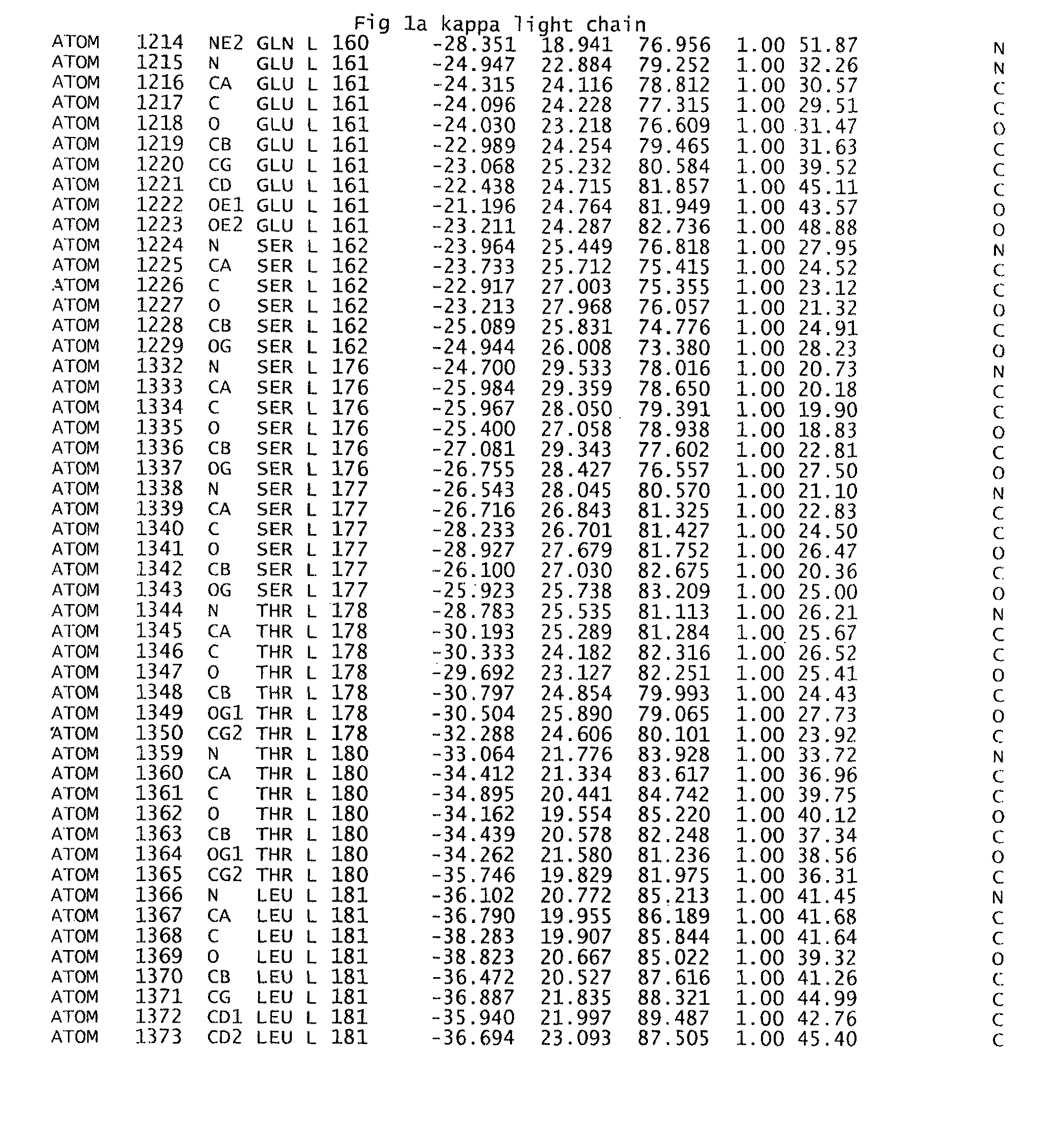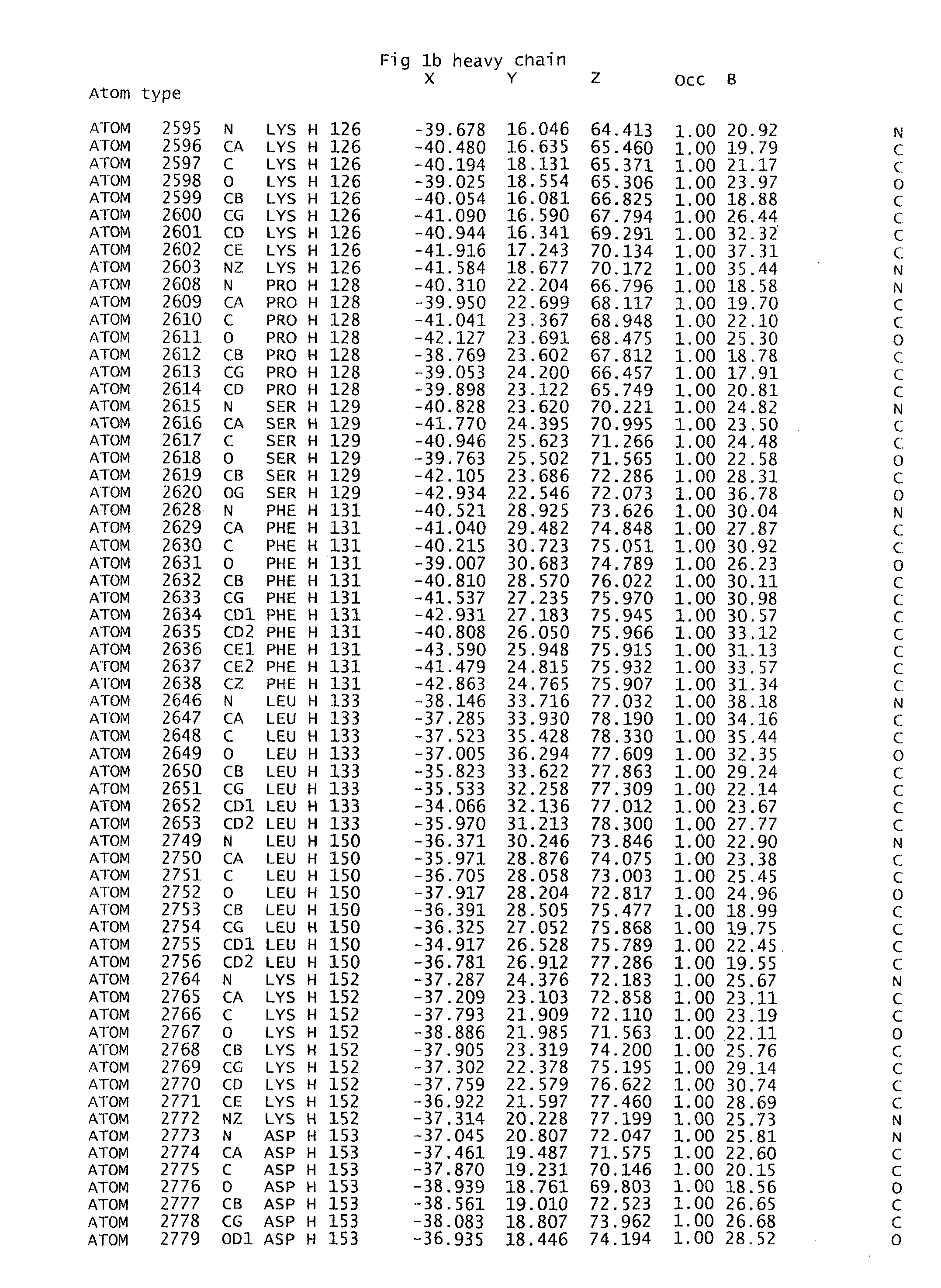Immunoglobulin g binding pocket
a technology of immunoglobulin and binding pocket, applied in the field of biochemistry, can solve the problems of lack of generality, low phage display ability, and the inability to produce peptidic ligands in phage display
- Summary
- Abstract
- Description
- Claims
- Application Information
AI Technical Summary
Benefits of technology
Problems solved by technology
Method used
Image
Examples
example 1
Identification of the Binding Pocket According to the Invention
[0108]To identify conserved sequence patches in the constant regions of heavy and light chain sequences of human Fab-fragments of κ-type sequence homology searches using BLAST (Altschul, 1990) followed by sequence alignments using CLUSTAL W (Thompson, 1994) were performed. A total of 29 heavy chain and nine κ light chain sequences of human IgG's were identified after the BLAST search. (FIG. 2).
[0109]The highest-resolution (2.0 Å) crystal structure of κ-Fab was investigated (accession code to the Protein Data Bank 1vge, Chacko et al., 1996). The MOLCAD (program available from Tripos Associates, St. Louis, Mo.) multi channel surface tool was used to identify possible binding sites in the constant part.
[0110]Two clefts and one pocket were identified. The pocket (FIG. 3) is located between the constant parts of the light and the heavy chain. Strictly conserved or highly conserved residues surround this pocket. Because of thi...
example 2
Use of a Fab Fragment Comprising a Binding Pocket to Identify Selectively Compounds
[0111]In the example below, the term “compound” is sometimes used to denote chemical entities tested for their ability to bind selectively to a binding pocket according to the invention. However, as appears clearly from the context, such “compounds” are not the claimed compounds discussed in the section “Detailed description of the invention” and in the appended claims.
[0112]The program package SYBYL version 6.7 (available from Tripos Associates, St. Louis, Mo.) running on an OCTANE 2-CPU 195 MHz Silicon Graphics workstation was used for all modelling. This interface provides the necessary information regarding the software and databases below.
Virtual Library
[0113]The program SELECTOR was used for filtering the molecules in MDL™ (MDL Information Systems Inc.) Available Chemical directory (ACD) allowing only for entities with a molecular weight in the range 200-500 Da and a calculated water / octanol par...
example 3
Control Experiments
Example 3a
Use of a F(ab′)2 Fragment Comprising the Binding Pocket to Verify Binding of a Selected Compound
[0123]The present example was performed with a F(ab′)2 fragment of a different specificity, i.e. a different variable part, from the one used in Example 2 above in order to verify that binding of one the selected compounds still occurred.
[0124]The testing was performed as described above in Example 2, but this time using 1 μM protein and using compound AB—0000860 as defined above in table 1. The results were positive, which implies that there is an interaction between AB—0000860 and at least two kappa Fab fragments of different specificities.
PUM
| Property | Measurement | Unit |
|---|---|---|
| Molecular surface | aaaaa | aaaaa |
Abstract
Description
Claims
Application Information
 Login to View More
Login to View More - R&D
- Intellectual Property
- Life Sciences
- Materials
- Tech Scout
- Unparalleled Data Quality
- Higher Quality Content
- 60% Fewer Hallucinations
Browse by: Latest US Patents, China's latest patents, Technical Efficacy Thesaurus, Application Domain, Technology Topic, Popular Technical Reports.
© 2025 PatSnap. All rights reserved.Legal|Privacy policy|Modern Slavery Act Transparency Statement|Sitemap|About US| Contact US: help@patsnap.com



